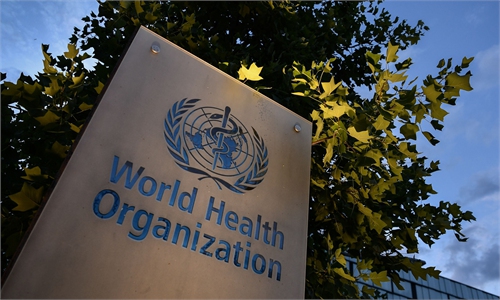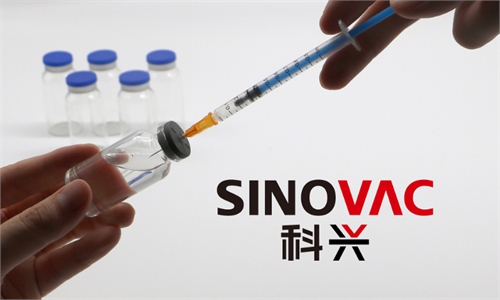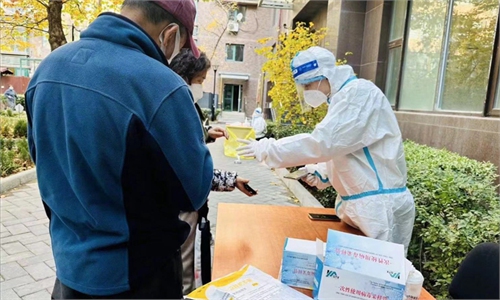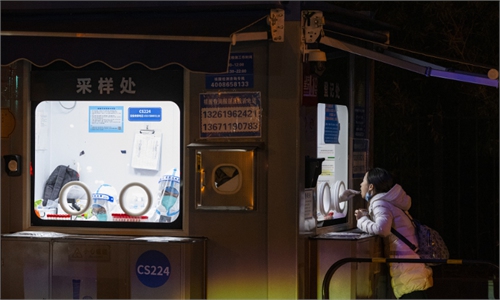China vows to ensure smooth operation of transportation network amid virus cases spike
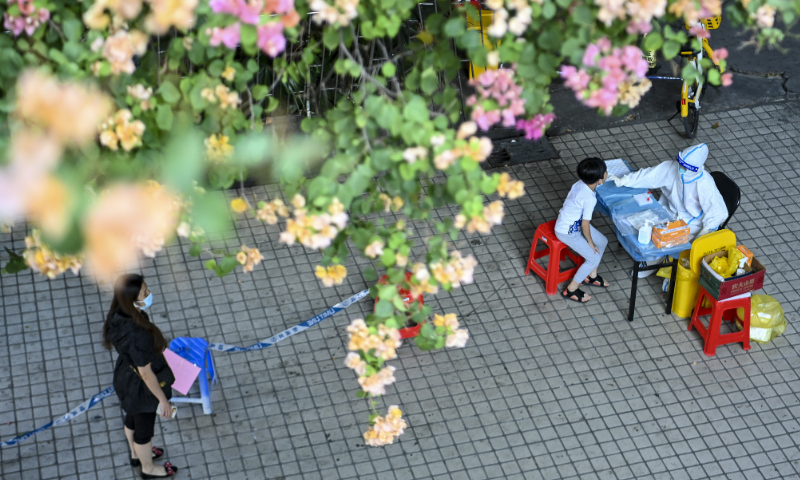
Residents take nucleic acid test of COVID-19 in Guangzhou, South China's Guangdong Province on October 29, 2022. Photo: VCG
The Chinese central government and various ministries have vowed to step up efforts to clear logistic hiccups and ensure the smooth operation of the transportation network in recent days, after the country saw daily new COVID-19 cases exceeding 30,000 for two days, which led to stringent anti-virus measures that could weigh on business activities.
The pledge represents a fresh sign that the world's second-largest economy is continuously striking a balance between active epidemic prevention and economic development, after China released 20 optimized measures to fight the COVID-19 epidemic in mid-November.
Though transport chokes remain in some regions hit hardest by the virus, such as in Southwest China's Chongqing Municipality, hopes are high that improvements are within sight, and the world's largest manufacturing powerhouse is set to leverage its rich experience to bolster domestic supply chain resilience and further demonstrate to the world its manufacturing chain strength, industry insiders and observers said.
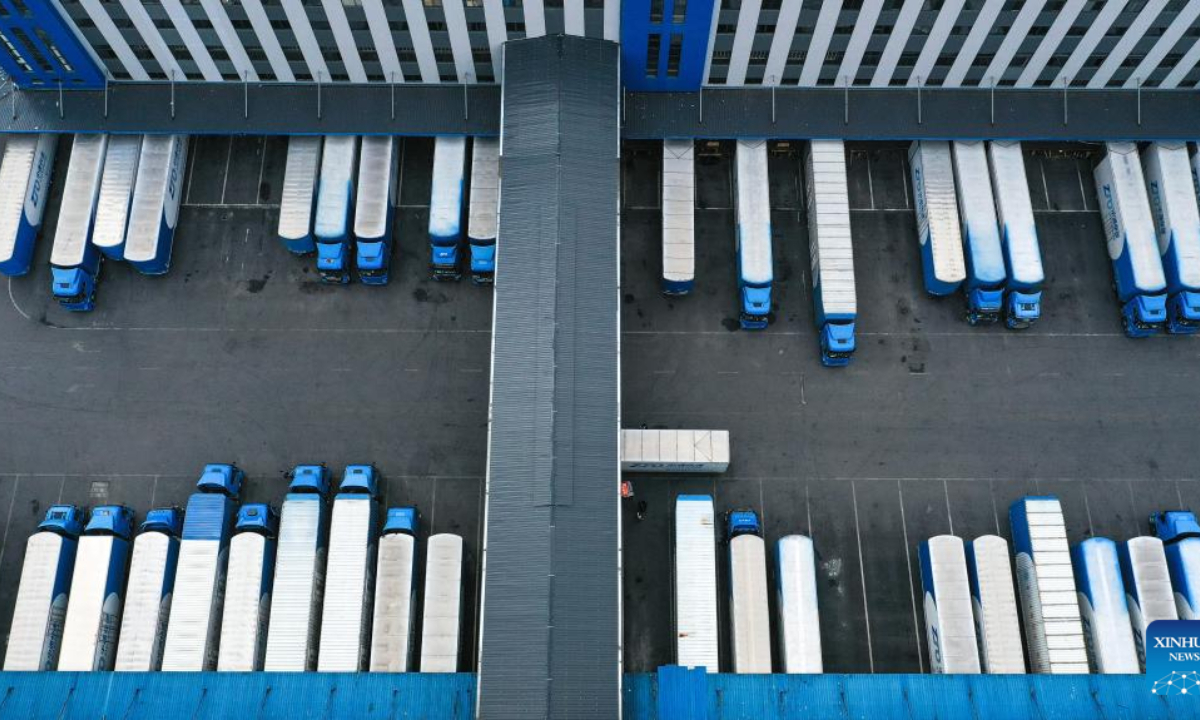
This aerial photo taken on Nov 10, 2022 shows trucks parking in a logistics park in Longli County, southwest China's Guizhou Province. Photo:Xinhua
Smoothing the supply chain
Shu Chi, a spokesperson of the Ministry of Transport, pointed out at a press briefing on Friday that the work of ensuring smooth transportation services faces renewed pressure, as some regions "impose barriers at every level and excessively control the flow of trucks."
The ministry mulled "five bans" on Friday, aiming to troubleshoot recently surfaced issues including a "one-size-fits-all" approach in restricting last-mile delivery services in regions under closed management, a complete ban on the entry and exit of trucks in cities under lockdown or strict COVID-19 restrictions, and restricting the passage of trucks using the excuse of waiting for drivers' nucleic acid test results.
The new measures come on the heels of a similarly themed conference chaired by Li Xiaopeng, the Minister of Transport and the commander-in-chief of the working group set up to ensure the smooth operation of logistics under the State Council, China's cabinet, on Thursday.
During the meeting, he stressed that the ministry should, based on the 20 optimized measures, efficiently coordinate work related to epidemic control and smoothen transportation, so as to provide maximum protection for people's life, safety and physical health, while minimizing the impact of the epidemic on social economic development. He also noted that it is important to ensure safe and open transportation in key necessities such as energy and grain.
The new guidance comes as China reported more than 30,000 confirmed and asymptomatic COVID-19 cases for two consecutive days since Thursday, with major cities such as Guangzhou, South China's Guangdong Province, the capital Beijing and Chongqing being hit the hardest. It is the highest daily figure since the COVID-19 epidemic broke out in Wuhan, Central China's Hubei Province in early 2020.
As the epidemic situation becomes more complicated, highways, roads and ports in some regions have inevitably seen temporary closures amid an escalation of anti-virus measures, which led to supply chain blockages and postponed deliveries of key parts that have undercut factory capacity to some extent.
It has been reported that since November, over 10,000 tons of vegetables grown in Central China's Henan's Province - the country's agricultural base - could not be shipped outside the province due to traffic blocks, thepapern.cn reported. The situation has gradually been improved with the launch of more local freight services.
Against this backdrop, observers said the stakes of ensuring an open and smooth transportation network are high, as it is important not just to providing key supplies, but also serves as the backbone of the fundamentals that keep the world's largest factory humming.
Zhou Zhicheng, director of the research department under the China Federation of Logistics and Purchasing, told the Global Times on Friday that the main sticking point at this current stage is the multiple anti-epidemic requirements in last-mile delivery, in particular at street and district levels, some of which remain confusing. But the congestion situation is not as perilous as it was in April, as there are virtually no traffic suspensions in highways and service stations.
"However, it's still worth addressing in advance, as coronavirus cases have suddenly surged in recent days. It is also a timely reminder to local authorities with regard to growing complaints about delayed deliveries for China's Double 11 shopping festival," Zhou said.
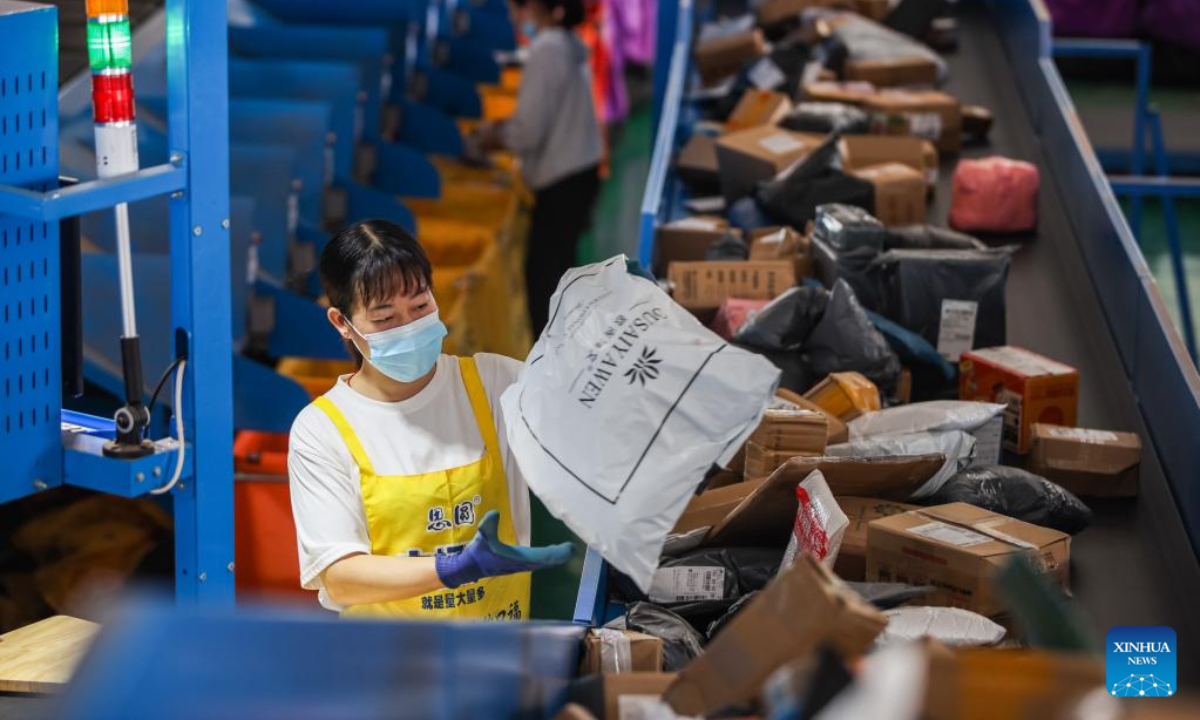
A staff member distributes parcels at the workshop of a logistics company in Lanshan County of Yongzhou City, central China's Hunan Province, Nov 10, 2022. Photo:Xinhua
Gradual improvement
In China's manufacturing base Guangzhou, which is also home to one of China's busiest ports, local entrepreneurs and logistic firms said that supply chain hurdles that emerged in November have largely been removed, though it will certainly take some time - depending on how the epidemic develops - for factory capacity to bounce back.
Liang Jiaxian, a deputy branch manager of FS International, a Hong Kong-based international logistics company, told the Global Times on Friday that "currently, the import and export business is normal at sea and air ports in Guangzhou."
She noted that the epidemic mainly affected enterprises or employees in the blocked areas, who need to work at home, and express delivery services in certain areas. However, there has been no major impact on overall road transportation in the city or the shipment of bulk commodities.
Another manager of a Guangzhou-based manufacturer, surnamed Duan, told the Global Times that the country's exports are "shipped as usual now" without being interrupted by the new round of epidemic flare-ups.
The smoothening of logistics service in cities like Guangzhou also augurs well for other virus-hit regions still haunted by supply disruption risks. A manager of a robotics company based in Chongqing, who spoke on condition of anonymity, told the Global Times on Friday that the firm is unable to source parts from Beijing due to limited traffic allowed into areas under strict management, which has delayed its production and customer deliveries.
"Hopefully, we will be included on the transportation white-list soon," he said, while voicing hope that the optimized 20 measures would pave the way for a more precise solution to balancing anti-virus measures with production.
Zhou noted that cities in the Pearl River Delta region have built up policy experience in ensuring stable supply chains, such as opening green channels and granting traffic permits to eligible companies. Observers expect other cities to soon catch up in management.
In response to concerns raised by French businesses, China's Foreign Ministry spokesperson Mao Ning said at a press briefing on Friday that China attaches great importance to providing support for foreign companies, and will take targeted measures to help companies solve related problems.
"China will continue anti-epidemic efforts through studying, summarizing and adjusting based on the principle of being scientific and precise, so as to minimize the impact of the epidemic on social economic development," Mao said.
Earlier this month, China rolled out 20 optimized measures in its COVID-19 response, including shortened quarantine periods for international arrivals and cancelation of circuit breakers for inbound flights.
COVID-19 cases will continue to increase for a short period as many cities still haven't seen the tipping point, an expert from the Chinese Center for Disease Control and Prevention (CDC), who requested anonymity, told the Global Times. However, he predicted that the caseload will flatten if the governments respond swiftly and take scientific measures properly.
When asked about the measures' impact on the economy, the experts slammed foreign media hype, saying that if case numbers soar, many people, including factory workers, will be hit by the virus and not be able to work; moreover, the hospital system will become overwhelmed, which could cause social turmoil.
He cited the example of the US' labor shortage when the country eased COVID-19 restrictions prematurely.
On top of the quarter-million people of working age who have died from coronavirus, at least twice that number across all ages have permanently disappeared from the workforce, the analysis by the National Bureau of Economic Research, a US organization, said in September.
